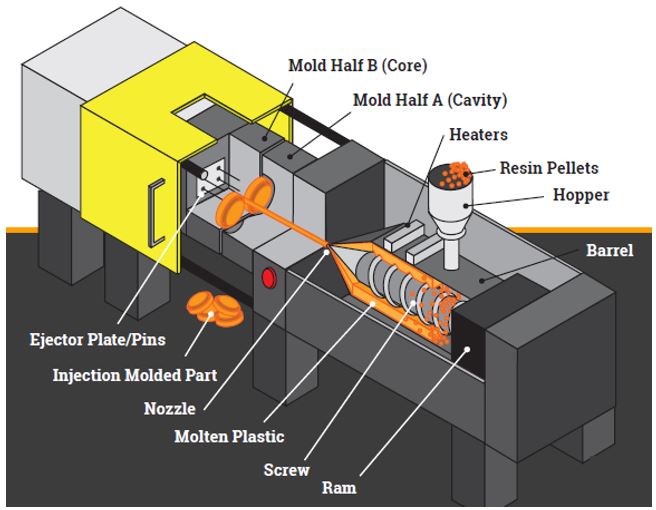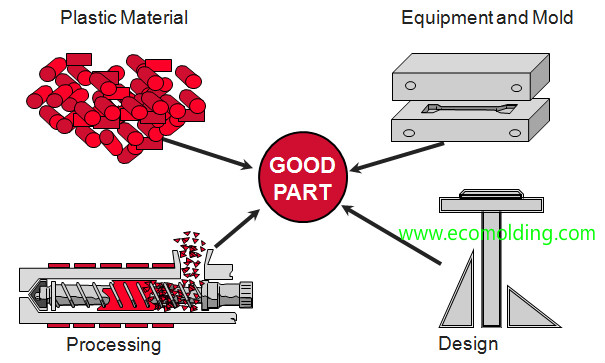Discovering the Future of Plastic Injection Molding in the Manufacturing Sector
Discovering the Future of Plastic Injection Molding in the Manufacturing Sector
Blog Article
The Future of Plastic Injection Molding: Innovations and patterns to Enjoy
As the plastic injection molding sector advances, several essential patterns are arising that assurance to improve its landscape. Automation and smart manufacturing methods are established to boost performance, while the change towards sustainable materials reflects a growing ecological awareness. In addition, advancements in 3D printing are leading the way for unprecedented design flexibility. These technologies additionally bring forth difficulties that need cautious consideration. Understanding how these components will certainly connect and affect future methods is vital for stakeholders seeking to navigate this transformative period effectively.
Automation and Smart Manufacturing
As the plastic injection molding sector develops, automation and smart production are taking center stage, transforming manufacturing procedures - Plastic Injection Molding. The integration of innovative innovations such as robotics, IoT (Internet of Points), and man-made intelligence is making it possible for manufacturers to boost effectiveness, lower operational prices, and enhance item high quality. Automated systems streamline process, minimizing hand-operated intervention and raising throughput, which is important in fulfilling the rising need for rapid production cycles
Smart making innovations promote real-time monitoring and data evaluation, permitting companies to enhance machine performance and forecast maintenance demands. This positive technique not just reduces downtime yet also extends the life expectancy of tools. The use of collaborative robots, or cobots, improves the versatility of manufacturing lines, making it possible for employees and equipments to operate side by side safely and efficiently.
The adoption of automation in plastic injection molding is not merely a trend however a calculated essential for companies aiming to remain competitive in a worldwide market. By utilizing these modern technologies, suppliers can achieve greater accuracy, lower waste, and adjust promptly to transforming consumer needs, placing themselves for sustainable growth in a progressively automatic future.
Sustainable Materials and Practices
The press in the direction of automation and clever production has led the way for a greater emphasis on lasting products and methods within the plastic injection molding industry. Firms are significantly looking for green choices to standard petroleum-based plastics, causing the adoption of bio-based and recycled products. These lasting materials not only lower ecological effect but also straighten with consumer demand for greener items.

Furthermore, partnership between producers, material vendors, and environmental organizations is promoting development in the advancement of sustainable materials that meet performance standards without compromising quality. As laws around plastic use come to be more stringent, the industry is positioned to adapt by accepting these sustainable strategies, making sure lasting stability and lowering dependence on non-renewable sources. The combination of sustainability into plastic shot molding is not merely a fad; it is becoming an important component of company duty and operational excellence.
Developments in 3D Printing
Current developments in 3D printing innovation are considerably transforming the landscape of plastic shot molding. Once tough or impossible to accomplish through standard methods, the assimilation of additive his explanation manufacturing procedures allows for the fast prototyping of complex geometries that were. This capacity not only increases product growth cycles but additionally decreases product waste, aligning with the expanding demand for sustainable production methods
In addition, the introduction of crossbreed manufacturing methods, which combine 3D printing and injection molding, provides manufacturers the capability to develop intricate styles while keeping the efficiency of automation. This approach allows the manufacturing of personalized components customized to particular client needs without sacrificing the speed and scalability that shot molding gives.
Additionally, developments in products, such as high-performance polymers and compounds specifically developed for 3D printing, are boosting the useful capacities of printed components. These materials can stand up to better stress and show improved thermal properties, making them suitable for more demanding applications.
As 3D printing remains to advance, its assimilation into plastic injection molding procedures assures to improve productivity, lower costs, and foster innovation in product layout, positioning suppliers to much better fulfill the obstacles of a competitive market.
Information Analytics and IoT Assimilation
Information analytics and the assimilation of the Net of Points (IoT) are you can find out more reinventing plastic shot molding by supplying makers with unmatched understandings into their operations. By leveraging real-time data accumulated from interconnected equipments and sensing units, makers can check efficiency metrics, determine ineffectiveness, and enhance production procedures. This data-driven strategy promotes predictive maintenance, Web Site reducing downtime and expanding tools life expectancy.
Moreover, IoT integration permits boosted high quality control. By continually tracking variables such as temperature level, cycle, and stress times, manufacturers can promptly discover discrepancies from developed specifications and make adjustments in actual time. This not only boosts item consistency however also lowers waste and scrap rates.
The blend of data analytics and IoT technologies additionally equips suppliers to embrace even more nimble manufacturing techniques. With accessibility to extensive information analytics, organizations can react to market needs with higher adaptability, changing manufacturing timetables and setups as required. This adaptability is necessary in a rapidly altering production landscape.

Customization and Design Flexibility
Exactly how can personalization and style versatility improve the competitiveness of plastic injection molding? In an increasingly varied market, the ability to offer tailored solutions is paramount. Customization allows suppliers to fulfill details customer requirements, fitting distinct dimensions, shapes, and functionalities that standard items might not meet. This versatility not only cultivates customer loyalty but also opens up opportunities for new business opportunities throughout different industries, from automotive to customer products.
Advancements in style technologies, such as computer-aided layout (CAD) and fast prototyping, more reinforce this fad. These tools allow developers to develop complicated geometries and intricate patterns, which can be perfectly integrated into the production procedure. Therefore, suppliers can react swiftly to changing consumer preferences and market demands.
Moreover, the application of modular tooling systems improves layout adaptability, enabling for quicker changes in between different product designs without extensive downtime. This versatility can result in decreased lead times and reduced manufacturing expenses, making companies much more nimble and affordable. Inevitably, embracing modification and style flexibility in plastic injection molding not only elevates product offerings yet also enhances market positioning in an ever-evolving landscape.
Verdict
The future of plastic shot molding is identified by considerable improvements in automation, sustainable practices, and innovative products. Modification with modular tooling and fast prototyping will enable suppliers to continue to be receptive and affordable to the dynamic demands of the market.

The future of plastic injection molding is defined by substantial advancements in automation, sustainable methods, and ingenious products.
Report this page